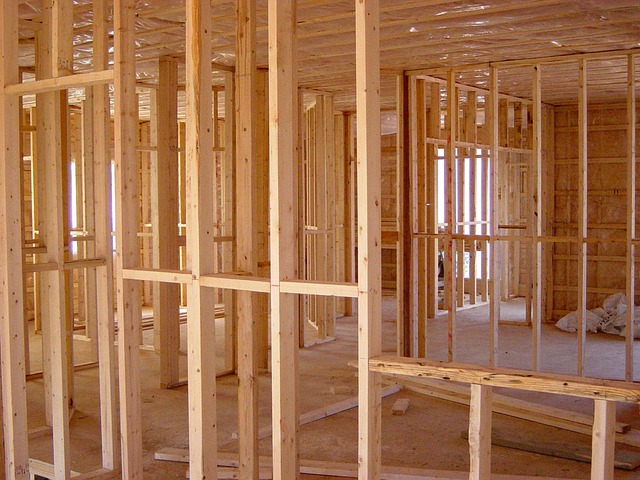Home improvement financing tailored for contractors addresses cash flow issues, fostering strong relationships and boosting satisfaction. By offering flexible funding options, businesses enable contractors to take on larger projects, enhance service offerings, and drive revenue growth. This strategic move opens up new market segments, levels the playing field for smaller contractors, and boosts local economy spending. Effective implementation involves a mix of loan types, competitive rates from reputable lenders, clear communication, and streamlined applications, attracting and retaining contractor interest. Targeted digital marketing highlights unique benefits, easing financial burdens during project timelines and seasonal fluctuations, while choosing the right financing partner and managing risks ensures contractor stability and meets growing demand for home improvement projects.
In today’s competitive home improvement market, contractor financing can be a powerful tool to boost revenues. This article guides you through understanding the dynamics of the industry and the unique needs of contractors. We explore the advantages of offering flexible financing options, from increased sales to stronger client relationships. Learn effective strategies for implementation, marketing these services, and managing risks. Discover how home improvement financing can become a game-changer for both contractors and their customers.
- Understanding the Home Improvement Market and Contractor Needs
- The Benefits of Offering Contractor Financing
- Strategies for Implementing Effective Financing Options
- Marketing Your Financing Services to Contractors
- Managing Risks and Maximizing Revenue through Financing
Understanding the Home Improvement Market and Contractor Needs

The home improvement market is a dynamic sector, with contractors playing a pivotal role in transforming homes and properties. To thrive in this competitive environment, understanding the unique needs of contractors is essential. Many contractors often face cash flow challenges due to project timelines and payment structures, which can hinder their ability to accept larger jobs or invest in new equipment. Home improvement financing for contractors addresses these pain points by offering flexible funding options tailored to their requirements.
By providing contractor financing, businesses can position themselves as trusted partners, fostering long-term relationships. This approach not only boosts contractor satisfaction but also encourages them to prioritize and promote the financing services to their clients. As a result, it creates a win-win scenario, where contractors can take on more projects, enhance their service offerings, and ultimately drive revenue growth for both parties involved.
The Benefits of Offering Contractor Financing

Offering contractor financing is a strategic move that can significantly boost revenues in the home improvement industry. It provides an opportunity to tap into a new market segment and attract contractors who may have been hesitant to take on projects due to cash flow constraints. By offering flexible financing options, contractors can secure larger jobs, increase project scope, and improve customer satisfaction. This is particularly beneficial for contractors looking to expand their business or those specializing in high-value, complex home improvements.
For contractors, the advantages are clear. It helps to level the playing field, enabling them to compete with larger companies that may have easier access to traditional financing. With contractor financing, small businesses can secure jobs and build a solid reputation, leading to long-term growth and increased profitability. Moreover, it provides customers with more options, making home improvement projects more accessible and encouraging spending in the local economy.
Strategies for Implementing Effective Financing Options

When implementing home improvement financing for contractors, a strategic approach is key to success. Start by offering a variety of loan types such as short-term loans for quick cash flow needs and long-term financing for larger projects. This caters to different contractor scenarios and ensures flexibility. Additionally, partner with reputable lenders who can provide competitive rates and transparent terms, enhancing your reputation and client trust.
Effective communication is another vital strategy. Clearly advertise your financing options through various channels like websites, social media, and industry events. Educate contractors about the benefits of financing, such as improved project management and higher customer satisfaction. Streamline the application process to make it hassle-free for contractors, boosting their interest and participation in your program.
Marketing Your Financing Services to Contractors

To effectively market your home improvement financing services to contractors, it’s crucial to highlight the unique benefits and flexibility your offerings provide. Contractors often face cash flow constraints due to project timelines and seasonal fluctuations, so emphasize how your financing solutions offer a steady stream of capital, enabling them to secure materials, hire staff, and manage unexpected costs without burdening their existing finances.
Use targeted digital marketing strategies to reach contractors directly. Create informative content around home improvement financing for contractors, such as blog posts, webinars, or email newsletters. Collaborate with industry associations and local contractor networks to build trust and visibility. Additionally, leverage social media platforms like LinkedIn, where many contractors are active, to showcase success stories, share expert insights, and promote your financing options through engaging, relevant content.
Managing Risks and Maximizing Revenue through Financing

Contractor financing can be a powerful tool to manage risks and maximize revenue in the home improvement industry. By offering financing options, contractors can attract more clients who may otherwise be unable to afford their services. This strategy not only expands the customer base but also ensures a steady stream of projects, reducing the risk of periods with little to no work.
When implementing home improvement financing for contractors, it’s crucial to choose the right financing partner. Look for reputable lenders who understand the unique needs of construction businesses and can provide flexible terms. Effective risk management involves setting clear eligibility criteria, ensuring prompt repayment plans, and providing educational resources to clients about responsible borrowing. By carefully managing these aspects, contractors can enhance their financial stability while offering a valuable service that meets the growing demand for home improvement projects.
By understanding the unique financial challenges faced by contractors and offering tailored home improvement financing solutions, businesses can significantly boost their revenue streams. This strategic approach not only assists contractors in securing projects but also fosters long-term partnerships. By implementing effective financing strategies, marketing these services effectively, and managing risks, companies can thrive in the competitive market and position themselves as preferred financing partners for contractors. Embracing these practices ensures sustained growth and a competitive edge in the home improvement industry.
